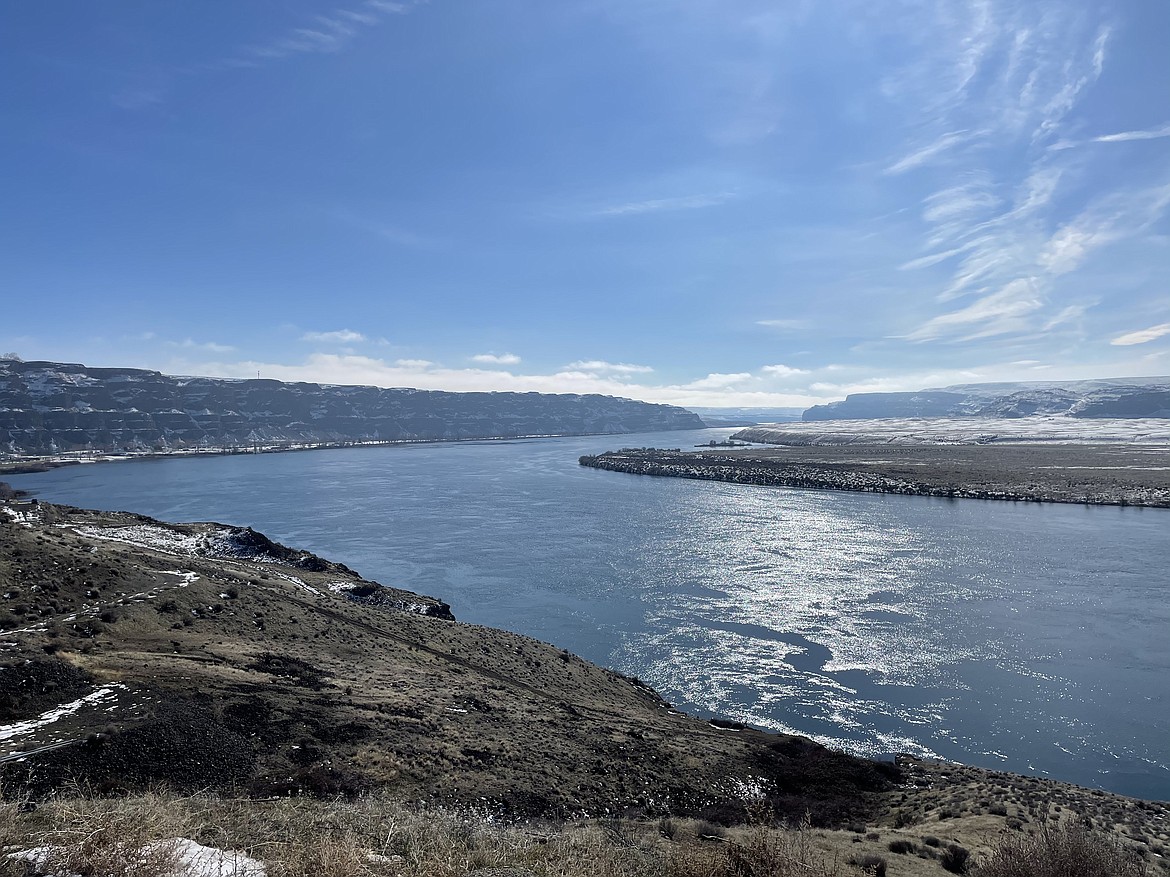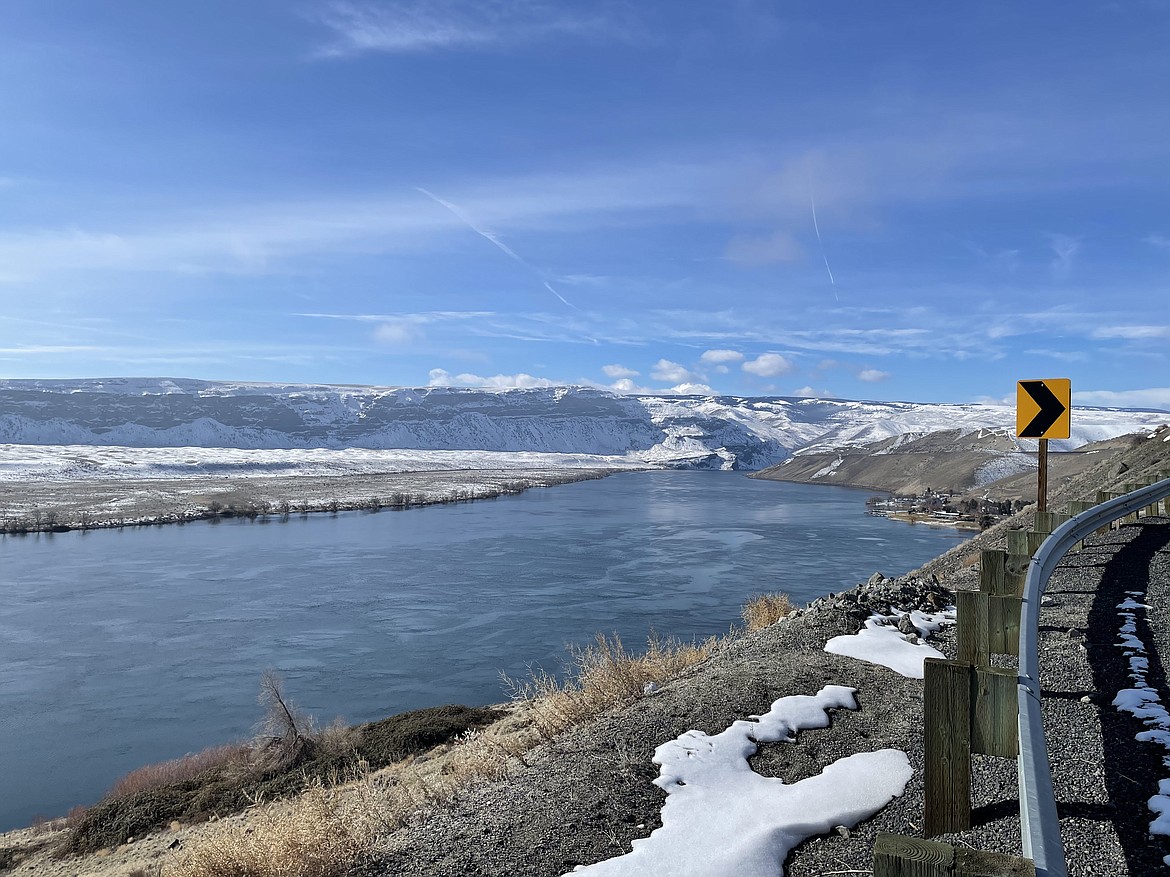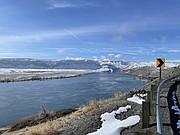Roll on, Columbia: Water from the river is Eastern Washington’s life blood
YAKIMA — It’s easy to forget the Columbia Basin is really scrubland desert.
The irrigation pivots, and all the green they make possible, will do that.
Because even if you can grow wheat anywhere you find sagebrush, the only thing that makes this some of the most productive farmland in the country is all the water provided by the multi-billion-dollar Columbia Basin Project.
“I grew up on a dryland wheat farm, so I know the value of water,” said Madison Moore, an agriculture economist at Washington State University and the first speaker at the recent annual Columbia Basin Development League annual conference.
The two-hour conference, held online via Zoom on March 4, covered the state of the project, upgrades to existing canal systems, the expansion of water to the Odessa Aquifer area, what it would take to complete the project and where the money might come from.
It was a lot to go through in 90 minutes, and mostly it was a review of the power of water to change a desert and make it bloom.
“My great-grandpa would haul water from the Columbia River by horse cart, and that makes you realize the value of water,” Moore said. “I am always amazed at what water can do.”
The Columbia Basin Project is authorized to draw around 6.4 million acre-feet of water every year from Lake Franklin Roosevelt, the reservoir formed by the Grand Coulee Dam, which provides power for siphons that draw water for irrigation.
Authorized for 1.1 million acres, the project currently provides irrigation water to around 670,000 acres in Grant, Adams, Franklin and Lincoln counties.
Moore said those irrigated acres are responsible for $3 billion worth of agricultural production — one-third of Washington’s total crop — and employ 13,000 people, or one in five jobs, across the region.
In addition, Moore said irrigation allows for greater diversity in what farmers can plant and harvest, so the benefits of something like the Columbia Basin Project — the largest federally funded irrigation project in the United States — outweigh the costs.
“We’re protecting an investment that benefits the state and the nation,” Moore said.
The Columbia Basin Development League was formed in 1964 to support the completion of the Columbia Basin Project, which itself was created in the mid-1930s as part of President Franklin Roosevelt’s New Deal. The project was intended to cover 1.1 million acres with three major canals, but Congress canceled funding for the East High Canal in the early 1970s, leaving much of the eastern portion of the project without access to river water and only two big canals to serve the entire region.
Extending irrigation to farmers who have been drawing water from the rapidly declining Odessa Aquifer has been the focus of a number of smaller canal and pipeline projects off the existing East Low Canal, according to Jed Crowther, development coordinator with the East Columbia Basin Irrigation District in Othello.
Crowther said the irrigation district, with the help of the U.S. Bureau of Reclamation, widened 46 miles of the East Low Canal to make sure there was enough capacity for the additional 87,000 acres the canal system will irrigate.
That will allow farmers who are currently irrigating with water drawn from deep wells sunk into the Odessa Aquifer to swap well water for irrigation water, he said.
However, according to East Columbia Basin Irrigation District Secretary-Manager Craig Simpson, a potential problem looms in the future with the expiration of some provisions of the Columbia River treaty in 2024. The treaty, which governs how the United States and Canada jointly manage the river for both flood control, hydroelectric generation and irrigation purposes, currently guarantees a certain amount of storage water in Lake Roosevelt — the reservoir created by the Grand Coulee Dam.
After 2024, that water becomes “called upon storage,” and under the Canadian understanding of the Columbia River system, could be subject to more and greater drawdowns at the Grand Coulee Dam to ensure for system flood control, limiting the amount of water available to the Columbia Basin Project’s three irrigation districts, Simpson said.
Part of the problem is Canada views storage for flood control differently than the United States, Simpson said. While the U.S. tends to view only federal dams like Grand Coulee as the flood control elements in the river, Canada views all dams on the U.S. side — including those owned and operated by the Grant County Public Utility District — as essential to flood control.
And that could lead to bigger and more frequent drawdowns of water at Lake Roosevelt, lowering the level of the reservoir and making it tougher for the Bureau of Reclamation’s 12 pumps to bring enough water out of the river for irrigation, he said.
“This is a great concern to us and landowners,” Simpson said.
One way the Quincy-Columbia Basin Irrigation District is looking at making more water available to irrigators on the western side of the CBJ is to limit the loss of water from evaporation and seepage, according to district Secretary-Manager Roger Sonnichsen.
During the conference, Sonnichsen told online attendees the district has been hard at work in the last few years and has spent around $39.1 million lining canals and replacing ditches with pipe to keep as much water in the system as possible.
“It’s estimated we’ve saved 32,000 acre-feet of water,” Sonnichsen said.
Vicky Scharlau, executive director of the Columbia Basin Development League, said it is still possible to complete the project, but it would take decades and as much as $5 billion to finish.
“It was designed to be phased in,” she said, noting no additional congressional “authorization is needed to finish the project.”
However, it would require a multi-year commitment from local, state and federal officials, as well as years of studies, before even the first mile of new canal could be built.
“It’s no small chunk of change,” she said. “It depends on the political will, and will take a lot of time and a lot of money.”
Charles H. Featherstone can be reached at [email protected].






